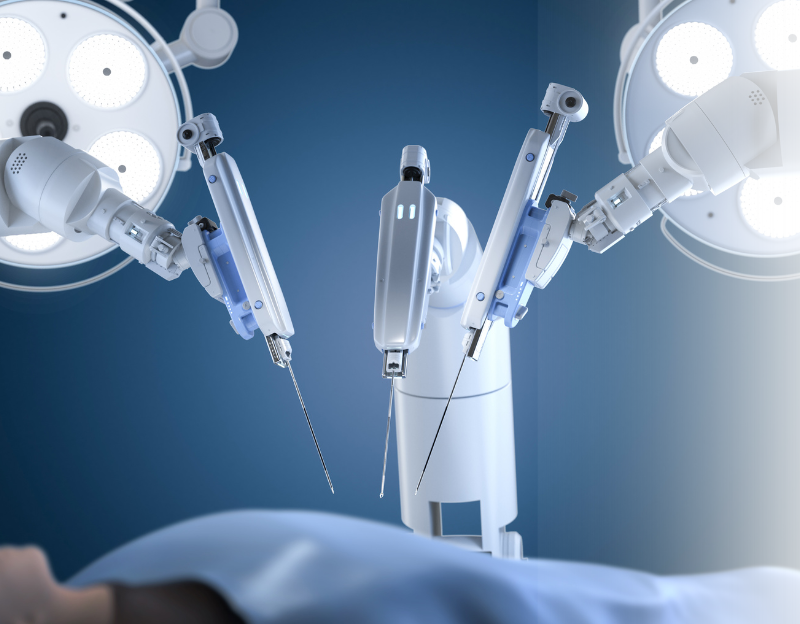
13 Nov, 2025
Feel free to reach out to us.

13 Nov, 2025

This article is medically reviewed by Dr. S.K Bala, Consultant - Surgical Oncology, HCG Cancer Centre, Kolkata.
Five years ago, HCG – the Specialists in Cancer Care launched its first comprehensive cancer centre in the city of Kolkata. Since then, the comprehensive cancer hospital in Kolkata has achieved remarkable milestones in cancer care through the adoption of modern-age diagnostic and treatment approaches.
In 2023, HCG Cancer Centre, Kolkata deployed its first robotic surgical system, da Vinci X.
Through this surgical robot, the hospital has made a significant leap in cancer surgery, which has benefited hundreds of patients with different types of cancer.
Recently, the expert team at HCG Kolkata performed robotic Whipple surgery on a patient with pancreatic cancer successfully, and with that HCG became the only cancer hospital in Eastern India to perform this procedure.
Robotic Whipple Surgery is not only effective but is also extremely patient-friendly. Since this procedure is minimally invasive, there are fewer complications, and patients recover faster.
In this blog article, we extensively discuss what the robotic Whipple procedure is, how it works, how it benefits patients as a pancreatic cancer treatment, and how the robotic approach is different from the traditional approach.
We are also discussing an interesting case study, where we see a 60-year-old pancreatic cancer patient successfully undergoing a robotic Whipple procedure as part of their personalized treatment plan.
The robotic Whipple procedure, also known as robotic Whipple surgery or robotic pancreaticoduodenectomy, is a minimally invasive treatment option recommended for pancreatic cancer and other conditions related to the pancreas, gallbladder, small intestine, and bile duct.
A standard Whipple procedure involves the removal of the following organs:
The purpose of robotic Whipple surgery is the same as that of traditional Whipple surgery. However, the former is performed with smaller incisions, has fewer complications, and supports a faster recovery.
Keep reading to know the key differences between a robotic Whipple procedure and a traditional Whipple procedure.
The robotic surgery system has three components: the patient cart, the vision cart, and the surgeon console.
The patient cart comprises the operating table and the robotic arms carrying the surgical tools and a camera. The vision cart allows the patient cart and the surgeon console to communicate with each other by facilitating detailed imaging of the surgery site.
The surgeon console, which has an optical viewing system and handles and pedals to control the robotic arms, is where the surgeon sits and controls the movements of the robotic arms.
During the robotic Whipple surgery, tiny incisions will be made on the patient’s abdomen for the robotic arms to insert the surgical instruments and a camera.
The surgeon, or the Whipple surgeon, at the console starts manipulating the robotic arms, which will precisely perform the surgery, which involves the removal of the affected organs and tissues are removed, and reconstruction of the digestive tract.
Throughout the procedure, the surgical team will monitor the patient, ensure they are in the proper position, and provide necessary assistance.
Robotic Whipple surgery has multiple benefits, which make it a desirable option over the traditional approach of an open Whipple procedure.
| Characteristics | Robotic Whipple's Procedure | Traditional Whipple's Procedure |
|---|---|---|
| Incision size | Multiple small incisions, with their size ranging from 8-12 mm | One large incision with a size of 15-20 cm |
| Surgical Approach | Minimally-invasive; the robotic arms, which are guided by the surgeon, perform the procedure | Open surgery; the surgeon will directly perform the surgery. |
| Dexterity | Robotic surgery offers a better range of motion and allows surgeons to reach hard-to-access areas easily. | Certain areas in the abdomen are difficult to access for human hands, and this may affect the efficacy of the procedure. |
| Visualization | This approach provides a 3D visualization and 10X magnification feature, which provides the surgeons with detailed information about the surgery site. | The direct view or 2D laparoscopic view may not be as detailed as the 3D view. |
| Precision | The use of robotic arms enhances the precision, as it filters out the hand tremors, which are seen during open surgery. | The steadiness of the surgeon's hands and their skill become imperative. |
| Recovery Time | The recovery time is relatively less, as the incisions are small, blood loss is minimal, and the risk of complications is reduced. | The recovery may take a long time, as this is a complicated procedure, and there is a large incision involved with a high risk of various treatment-related complications, referred to as Whipple operation complications. |
| Pain Levels | The pain levels are relatively low, as the incisions are small. | The pain levels are high as a large incision is made. |
| Cost | Robotic Whipple procedure cost may be higher due to the equipment and expertise involved. | Direct costs are lower; however, it is associated with higher indirect costs or opportunity costs that are associated with post-operative care and delayed recovery. |
Recently, a 60-year-old patient visited HCG Cancer Centre, Kolkata, with complaints of anemia.
Upon running various diagnostic tests, it was found that the patient had periampullary (pancreas) cancer. As part of his personalized treatment plan, his expert team recommended he undergo a robotic Whipple procedure.
The surgery was successfully performed on the scheduled date. The post-operative recovery was uneventful, and the patient was discharged 8 days later.
As the patient here is a senior citizen in need of a complicated procedure, it was crucial for the expert team to devise a treatment plan that prioritized his comfort and overall well-being. By recommending the robotic Whipple procedure, the expert team was able to achieve better oncologic clearance, minimal blood loss, reduced postoperative pain, and eventually a better health outcome.
Currently, HCG is the only hospital to perform open and robotic Whipple procedures in Eastern India.
Whipple surgery is one of the most complicated and challenging GI surgeries to perform, and it demands a high level of training and expertise. At HCG Cancer Centre, Kolkata, we have a dedicated team of GI surgical oncologists and a state-of-the-art robotic surgery program, which helps us facilitate this high-end procedure for patients with pancreatic, gallbladder, and small intestine malignancies.
As the only hospital to perform this procedure (both robotic and traditional) in Eastern India, we are proud to have brought this advanced treatment approach to the doorstep of people in and around Kolkata.
Those looking for the best gastrointestinal care coupled with robotic expertise in Kolkata may reach out to the HCG Cancer Centre for expert consultation.
Robotic robotic Whipple procedure marks a significant advancement in the field of pancreatic cancer management. Through benefits like smaller incisions, fewer complications, reduced scarring, and faster recovery, robotic Whipple procedures for pancreatic cancer are made more patient-focused in comparison with the traditional approach.
While this procedure can transform cancer care for patients with pancreatic malignancies, not all patients may be ideal candidates for it. For each case, the doctor will carefully evaluate the individual case parameters and recommend the Whipple procedure only if they are confident that the patient will benefit from this procedure and return to the best state of health possible.

Author Bio : Dr. S. K. Bala
Consultant - Surgical Oncology and Robotic Surgery
MBBS, MS (General Surgery), DNB (Surgical Oncology), DNB (General Surgery)
Dr. S. K. Bala is a renowned surgical oncologist with over 10 years of experience. He can be consulted at HCG Cancer Centre, Kolkata. having expertise in the surgical management of head and neck cancers, breast cancers, GI cancers, and gynecological cancers, among many others, with a special interest in Minimal Access Cancer Surgeries (MACS). His approach to treatment emphasizes the use of minimally invasive techniques, as he is one of the very few surgeons in Eastern India who performs minimal access cancer surgeries (MACS).
To book an appointment with Dr. S. K. Bala, please click here.